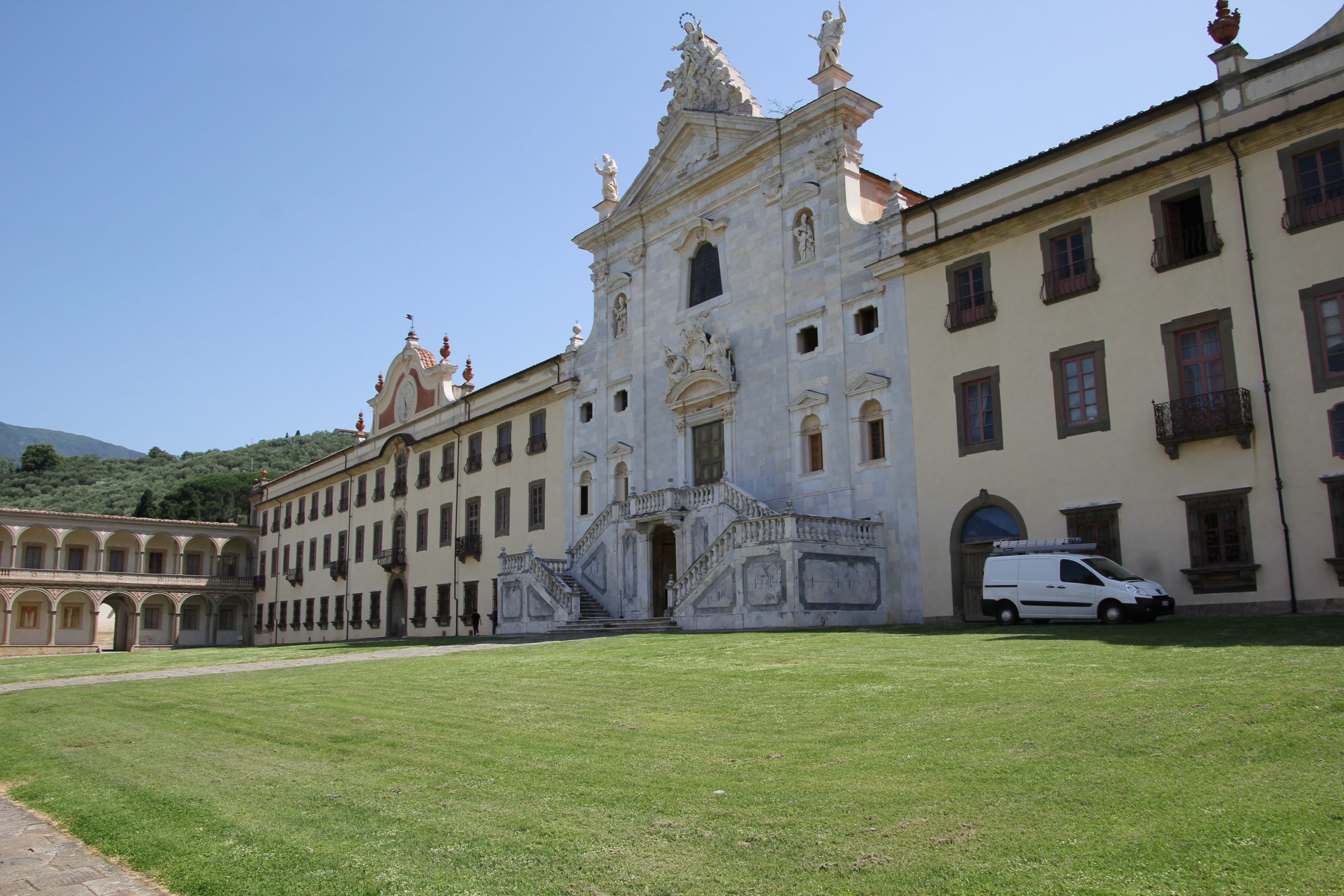
Certosa di Calci and its Museums
A few kilometers from Pisa, surrounded by the olive trees of the Valle di Calci is the Certosa, founded in 1366, a beautiful baroque structure set in a beautiful landscape.
The enter is by two pedestrian paths from which there is a perspective view of the facade of the complex. The spaces dedicated to the life of the monks are open to the public; the great cloister surrounded by the monks’ cells, the church, the chapels and the refectory. You can also visit the guest quarters dedicated to the Grand Duke, the cloisters, the corridors full of frescoes and the sacristy where the Atlantic Bible is exhibited, a four-part codex dating back to the 12th century.
Founded as a convent, today it is home to two important museums in the area: the National Museum of the Certosa Monumentale di Calci and the Museum of Natural History of the University of Pisa.
The first proposes a journey to discover the life of the monks who inhabited this convent, of their solitary life in environments rich in pomp. The church covered with frescoes, the chapels for the individual masses, the large central cloister, the cells, the refectory for Sunday lunches, the guesthouse reserved for visits by the Grand Duke with the cloister on several levels and finally the ancient “spezieria” dedicated to the production and sale of medicines.
The Museum of Natural History, managed by the University of Pisa, develops in the part used by the monks in everyday life and, consequently, less luxurious: the cellars, the warehouses, the mill, the carpentry, the barn, etc.
Thanks to a large collection of historical and scientific importance, there are exhibits of zoology, palaeontology and mineralogy.
La Certosa is a place where culture, science, history and nature merge and create a unique place that is worth visiting.
Photo: Gianni Careddu, Calci, certosa di Pisa (015), CC BY-SA 4.0
